Page 2 of 7
Re: Historic Preservation in the Urban Core
Posted: Wed Jul 10, 2013 8:33 am
by KCMax
Endangered house built by important KC architect
When Victor Beutner built his house in the Squire Park neighborhood in 1912, it was in a prosperous suburb.
His architect was Louis Curtiss, a master at his craft who wore all white, chain smoked and drove too fast.
That site at 1311 Manheim Road and blocks of old Squire Park homes that surround it now have national historic designation.
But the Beutner house is also on the city dangerous buildings list and on the Historic Kansas City Foundation list of 10 most endangered historic structures.
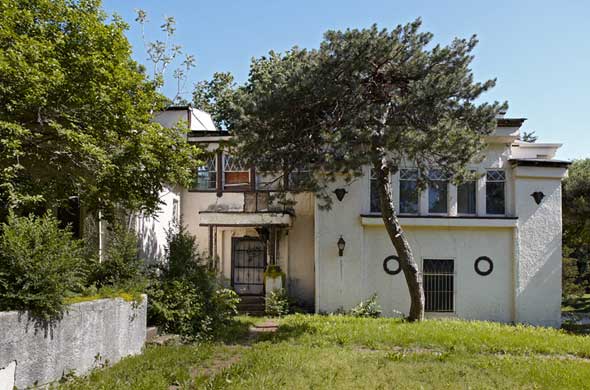
Re: Historic Preservation in the Urban Core
Posted: Wed Jul 10, 2013 4:24 pm
by chaglang
If anyone's interested in this property, shoot me a DM.
Re: Historic Preservation in the Urban Core
Posted: Mon Sep 09, 2013 12:23 pm
by DaveKCMO
did anyone else attend the most endangered buildings bus tour on sunday? pretty nice way to see what's at risk, although they didn't show their top 10 (just a smattering of properties between UMKC and crossroads and east to benton). on a side note, we got to go inside epperson house.
Re: Historic Preservation in the Urban Core
Posted: Tue Sep 10, 2013 7:45 am
by town cow
The 39th and Manheim property sold for $6-8K in the county's tax auction, as I remember.
Re: Historic Preservation in the Urban Core
Posted: Tue Sep 10, 2013 5:48 pm
by chaglang
town cow wrote:The 39th and Manheim property sold for $6-8K in the county's tax auction, as I remember.
$6400. Opening bid was $2900.
Re: Historic Preservation in the Urban Core
Posted: Tue Sep 10, 2013 6:18 pm
by smh
chaglang wrote:town cow wrote:The 39th and Manheim property sold for $6-8K in the county's tax auction, as I remember.
$6400. Opening bid was $2900.
Wow, it's rough, but is it in that poor of shape?
Re: Historic Preservation in the Urban Core
Posted: Tue Sep 10, 2013 6:26 pm
by FangKC
I wonder if the property was bought as a teardown?
Re: Historic Preservation in the Urban Core
Posted: Tue Sep 10, 2013 7:41 pm
by chaglang
FangKC wrote:I wonder if the property was bought as a teardown?
We had a structural engineer in there a few weeks ago, and he said the house is sound. It's all reinforced concrete, so it's weathered neglect better than a wood framed house would have. That's the good news. The bad: various estimates peg the work needed between $200k and $400k. If you wanted to skip the HTCs and do whatever you wanted on the interior, it would be at the low end of that scale. But you'd be missing out on around $50k from in eligible cost reimbursement. A historic reno would obviously be pricier, but you could recoup $100k or more.
The demo estimates we heard from the previous homeowner were about 10x the tax sale cost, so I can't imagine anyone would buy it as a teardown. The land isn't worth that much. It would be cheaper and easier to buy a lot that's already vacant.
Re: Historic Preservation in the Urban Core
Posted: Tue Sep 10, 2013 9:41 pm
by FangKC
That makes sense Chaglang. It's not like the Kempers need parking at that location.

What I was worried about is that someone in the neighborhood would buy it and demolish it just because they considered it an eyesore, and didn't care about any historic or architectural value.
Reinforced concrete would be more expensive to demolish, and that may in the end save it.
I would say that the only reason to save the house is because of its' pedigree, so doing the historic restoration would be the way to go.
Re: Historic Preservation in the Urban Core
Posted: Tue Sep 10, 2013 9:57 pm
by taxi
It may make more sense to do a historic rehab and collect on the tax credits; however, you still have to come up with the money for the rehab. Not all banks will lend with a promise of paying off debt with the tax credits, unless they are able to contract the sale of the state credits ahead of time. Many folks aren't even able to use those tax credits, especially the federal ones. The state credits can be sold, usually for around $0.87 on the dollar, depending on several factors, and the govt. considers that income, so you have to pay taxes on the sale of the credits. While MO has one of the better HTC programs around, last I checked it was very difficult to deal with the MO DED, who issues the credits, and once you have sold them, your effective rate becomes much lower than the 25% that they offer. I'm no accountant, but if you sell them all, the effective rate becomes more like 15% (depending on your tax bracket).
As you can see, it is obviously not really a great deal at $6400. Whomever ends up with it will be over investing, even for an architectural gem, in that part of town. Let's hope that the new owner has enough disposable income.
Re: Historic Preservation in the Urban Core
Posted: Wed Sep 11, 2013 3:11 am
by FangKC
A lot of it depends on how the historic renovation is done. If the owner had construction experience, that might make a huge difference in the cost if that person could do a lot of the work, and not contract it out. The owner might be able to come in around the $250,000 mark, and with the tax credits would bring it down to around $220,000 in renovation cost to the owner. They picked up the property for very little. There are other houses not to far away that list for around that price.
The neighborhood is coming back slowly, and there are some nice houses around there. The Beacon Hill redevelopment may help bring up house prices in the area over time.
The idea situation would be an owner who has a home renovation/construction business, and they could have work done on the house --mostly in the winter months when renovation work is slow--to keep workers busy during no-work periods. This type of owner could probably get wholesale purchases on materials as a contractor, so that might save a considerable amount. They would also have relationships with sub-contractors and might be able to strike lower prices to keep them working during slow months as well.
It's not just renovating the house. Some of the value might be increased by doing a really good re-landscaping of the property. That fence needs to be ripped out, and a lot of the old growth landscaping removed with a redesign of the whole yard. I would create a new border around the property using a hedge like the house across the street to the north. I would probably construct a medium height wall around the front of the house to create a interior courtyard, and to separate the property more from the busy street. I'd probably do some fairly high shrubs or small trees to block out the street view, and noise.
If I were really rich, and owned this property, in addition to the restoration, I would start buying up all the run-down houses surrounding this house and renovate them as well. Just doing that would increase the value of the restored Louis Curtiss house, because it would increase the housing values of the neighborhood, and remove from sight any less appealing properties. In many respects, the value of any single house is affected by the adjacent houses and how they look. The problem is mostly to the south.
Re: Historic Preservation in the Urban Core
Posted: Wed Sep 11, 2013 5:58 am
by chaglang
All good points. The DED is persnickety, for lack of a better word. They are probably well aware that their every move could be used against them by the Mayberry Machiavellis in the Legislature (hi, Brad Lager), so I guess I'd be the same way if I were in their shoes. There's also been some turnover among the reviewers, which never makes a process like that easier.
It's my understanding that someone in the neighborhood did buy the property. The name that was mentioned was not one I was familiar with. That's concerning because it's a very tight neighborhood and if I don't know most people here, I at least know their name. The upside is that if we have a question for the person, we can just walk over to their house.
Fang, if you want to start buying up houses here, there's a 3 BR shirtwaist in the 3600 block of Tracy for $55k. Needs about $15k worth of cosmetic work. There's also a McKecknie for sale in the 3800 block of Forest. The woodwork is in much better shape than mine.
Re: Historic Preservation in the Urban Core
Posted: Wed Sep 11, 2013 4:36 pm
by FangKC
Chaglang, the problem is I'm not really rich.

And I'm slowing working on my house in the Old Northeast.
Re: Historic Preservation in the Urban Core
Posted: Tue Feb 11, 2014 2:45 pm
by FangKC
State historic tax credits are a good investment
http://tinyurl.com/qgfcepw
Re: Historic Preservation in the Urban Core
Posted: Tue May 06, 2014 9:53 am
by FangKC
Historic Kansas City releases list of most endangered properties for 2014
http://www.kansascity.com/2014/05/05/50 ... emper.html
On the list are:
Kemper Arena
King Louie West Lanes building in Johnson County
100-118 W. Armour Blvd. The buildings, by architect John McKecknie,
Others are:
• The Sauer Castle, “one of the most architecturally and historically significant houses” in Kansas City, Kan.; it dates to 1872.

• Western Baptist Bible College, 2119 Tracy Ave., which the foundation describes as “the first and only” Christian institution west of the Mississippi River founded exclusively by African Americans. One of two buildings is still in use; the other is deteriorating.
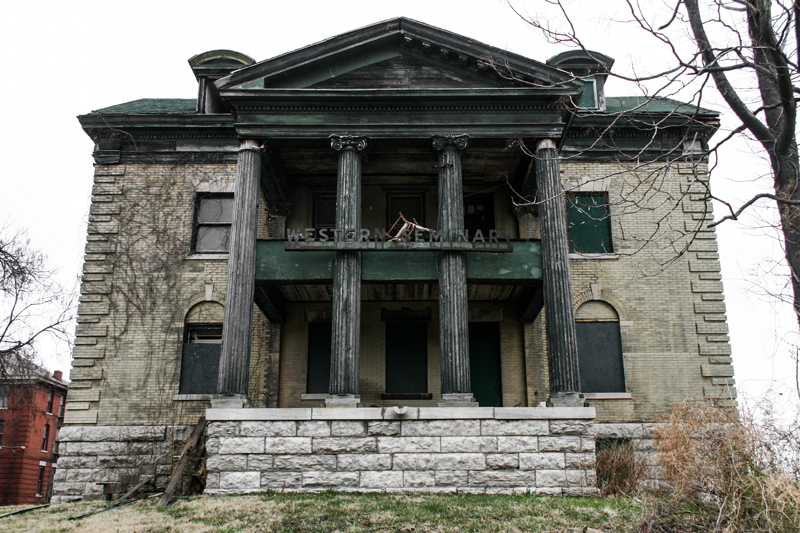
• Thacher School, 5008 Independence Ave. The Kansas City School Board is holding off demolition until September pending any last-minute preservation proposals for this century-old building.
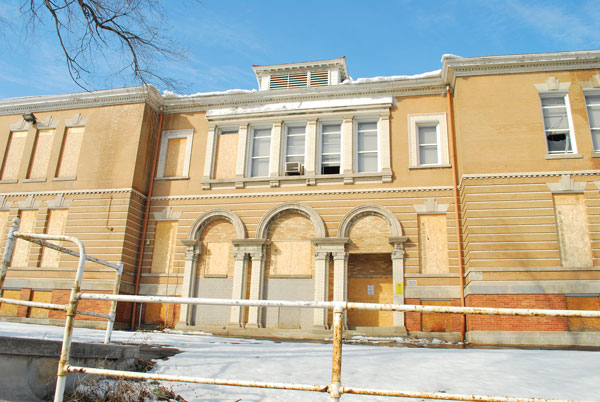
• Midwest Hotel, 20th and Main streets. The five-story building, built in 1915, is part of the historic Working Class and Mid-Priced Hotel District, but redevelopment, following a foreclosure sale in 2013, remains uncertain.

• St. John the Divine, a Gothic Revival church in Kansas City, Kan. A community revival effort is in the works, though far from certain.

• Knickerbocker Apartments. Another group of early 20th-century midtown residences, these structures are owned by Kansas City Life Insurance Co. and have been vacant for years pending rehabilitation or demolition.
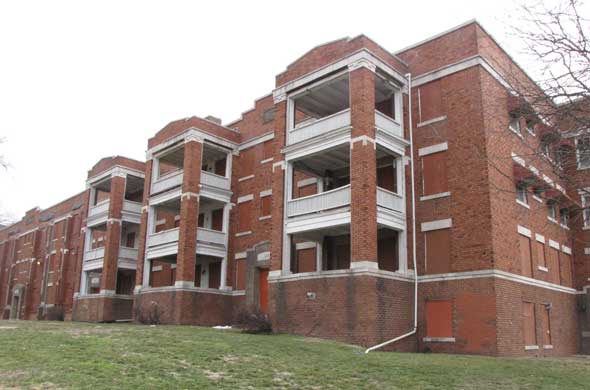
• Downs Building, 18th Street and Prospect Avenue. Once home to the Casa Loma Ballroom, the building served “as an important center for African-American political, social and musical events” and is suffering from “demolition by neglect.”
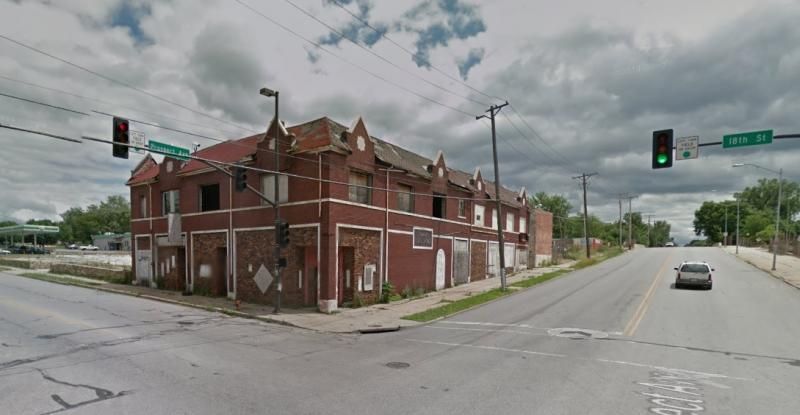
Historic Kansas City also has 15 structures on a “watch list” ranging from KCI Airport to residences once belonging to Negro Leagues baseball stars Satchel Paige, 2626 E. 28th St., and Buck O’Neil, 3049 E. 32nd St.
Satchel Paige residence
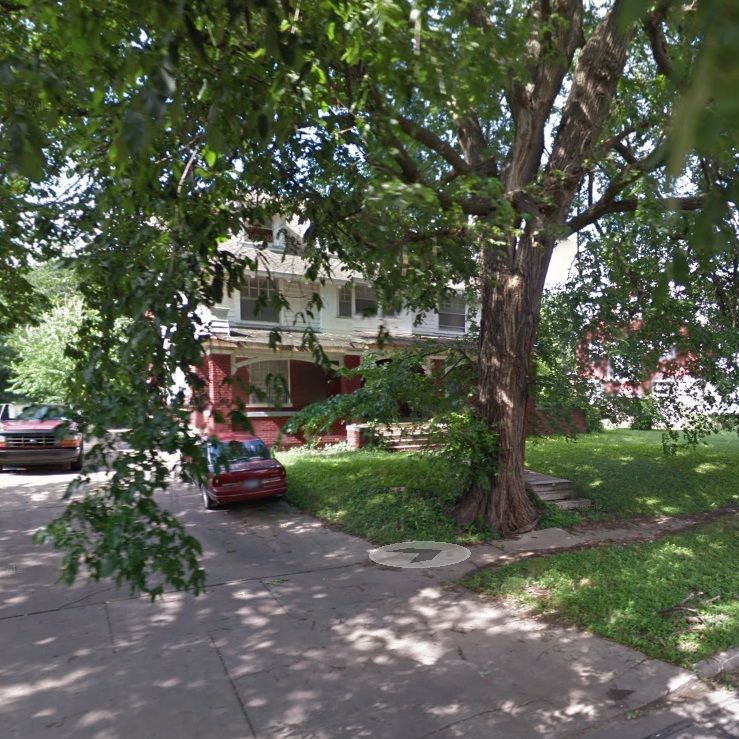
Buck O'Neil residence
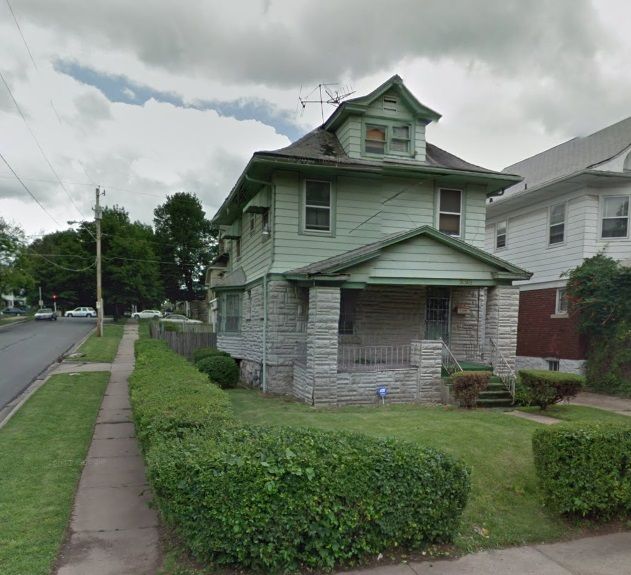
Re: Historic Preservation in the Urban Core
Posted: Tue May 06, 2014 10:01 am
by loftguy
A list of properties. What does it do? It brings awareness to some, but not very proactive.
What are the concrete steps toward saving these properties? That should be the focus of historic preservation organizations. Find a way to stabilize and incent action.
Simply complaining/holding award ceremonies is not enough.
Re: Historic Preservation in the Urban Core
Posted: Tue May 06, 2014 10:33 am
by FangKC
I agree Loftguy. Kansas City Foundation is a paper tiger. Until they get some kind of endowment that funds the ability to assemble and hold properties, or raise funds for renovation, and a staff to seek out developers willing to undertake the work, etc., they are basically howling in the wind.
If some philanthropist, or group of them, really wanted to give a gift to Kansas City that would have a long-term benefit, it would be funding a hefty endowment for this work.
If they set up an entity to do the actual renovation and preservation themselves, they should attempt to restore and then sell the building to continue funding other projects.
Re: Historic Preservation in the Urban Core
Posted: Wed May 07, 2014 7:52 am
by town cow
In the late 1970's- early 80's the HKCF got the City to put up some $ for a historic revolving reno fund to do just that. They did quite a few properties--some in the Santa Fe neighborhood, five brick homes across from Longfellow school, the shingle house at the nw corner of 36th and Kenwood...
Re: Historic Preservation in the Urban Core
Posted: Wed May 07, 2014 8:04 am
by DaveKCMO
town cow wrote:In the late 1970's- early 80's the HKCF got the City to put up some $ for a historic revolving reno fund to do just that. They did quite a few properties--some in the Santa Fe neighborhood, five brick homes across from Longfellow school, the shingle house at the nw corner of 36th and Kenwood...
it would be great if the private sector stepped forward to help fund something like this. it might elicit a more consistent public response.
Re: Historic Preservation in the Urban Core
Posted: Wed May 07, 2014 11:16 am
by FangKC
The City and County already support historic preservation through tax abatements on some properties, and in some cases TIF to help redevelop some other older properties.
In other cases, the City has purchased buildings to preserve them. The Empire/Mainstreet Theater being one example. The City took ownership of that structure from Executive Hills, and placed it on the historic register before turning it over to Cordish/AMC for renovation.
The City also has other avenues to purchase historic properties and hold them for redevelopment, or provide funding tools through the Land Clearance for Redevelopment Authority, and Planned Industrial Expansion Authority (PIEA), where it can also issue revenue bonds to contribute to the funding plan.
It has done this with the Rochester Hotel on Highland Avenue, and the houses across the street, in the Jazz District; and apartment buildings on Armour Boulevard--including the Bellerive.
http://edckc.com/portfolio/commonwealth-apartments/
The City does a variety of things to help already, but doesn't have unlimited resources to do it alone. It's needs public/private partnerships. For Historic Kansas City to be effective, it needs an large endowment so that it can be proactive. This means buying up historic properties before they are endangered, and putting them on the historic register and local landmarks list, and then working alone, or in public/private partnerships to renovate these properties and sell them once they are viable once again.
A good example of how having a private endowment could help is the case of 100-118 W. Armour Blvd. The buildings, by architect John McKecknie. Historic Kansas City could purchase those buildings from the developer who doesn't want to renovate them. They could mothball them and seek another developer, or renovate them from their endowment and sell them afterwards. They could also do this with the Knickerbocker Apartments, and in partnership with the Thanks Walt Disney group. for the Laugh-O-Gram Studio building. Some projects would be outright purchases, and others would be financial assistance in the form of grants or loans.
At the very least, an endowment could buy properties that would otherwise be demolished by their owner because they don't want to renovate them, or can't afford it. Some buildings might even be purchase at county tax auctions, or in foreclosure sales by banks.










